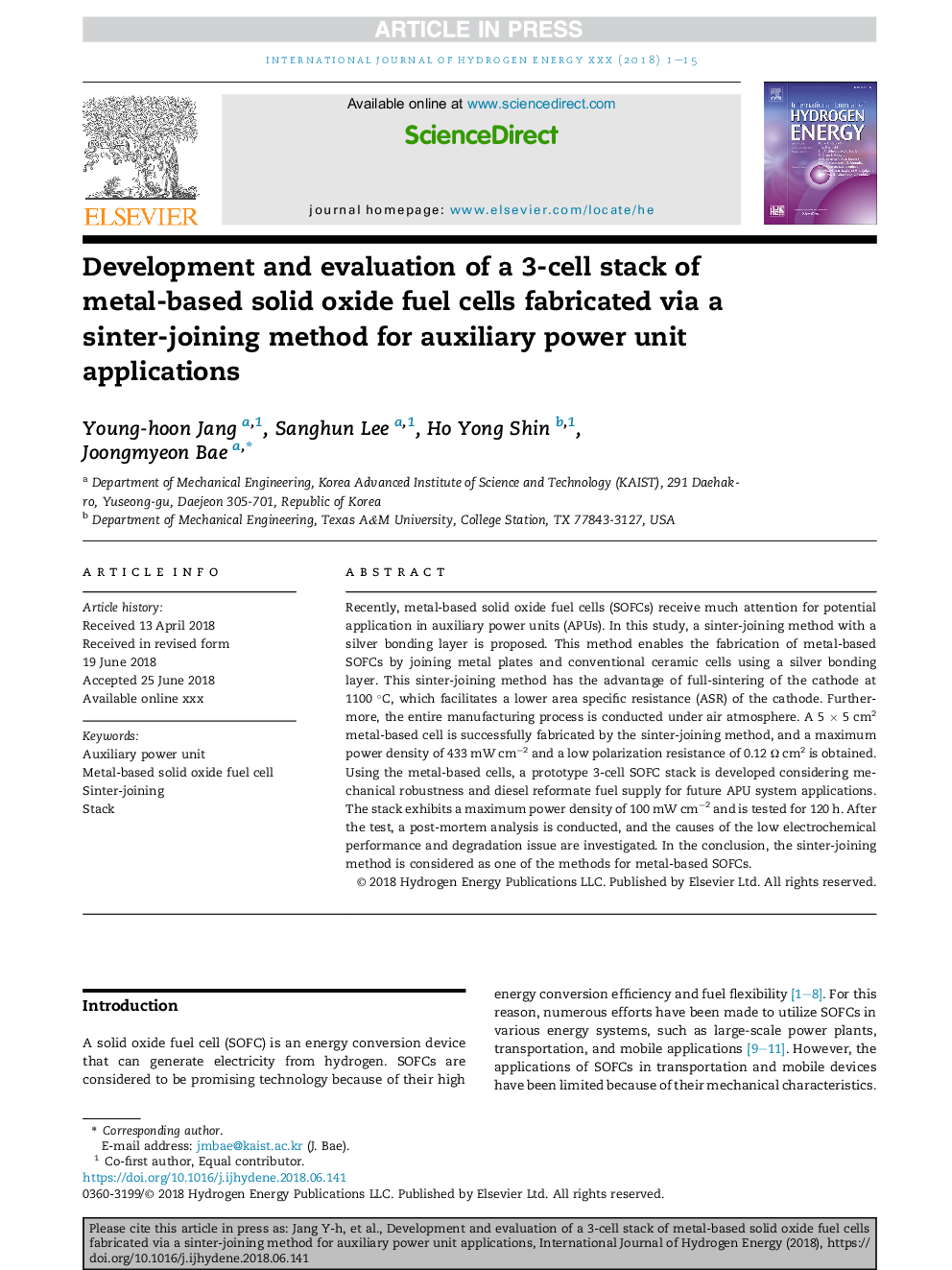| Article ID | Journal | Published Year | Pages | File Type |
|---|---|---|---|---|
| 8961306 | International Journal of Hydrogen Energy | 2018 | 15 Pages |
Abstract
Recently, metal-based solid oxide fuel cells (SOFCs) receive much attention for potential application in auxiliary power units (APUs). In this study, a sinter-joining method with a silver bonding layer is proposed. This method enables the fabrication of metal-based SOFCs by joining metal plates and conventional ceramic cells using a silver bonding layer. This sinter-joining method has the advantage of full-sintering of the cathode at 1100 °C, which facilitates a lower area specific resistance (ASR) of the cathode. Furthermore, the entire manufacturing process is conducted under air atmosphere. A 5 Ã 5 cm2 metal-based cell is successfully fabricated by the sinter-joining method, and a maximum power density of 433 mW cmâ2 and a low polarization resistance of 0.12 Ω cm2 is obtained. Using the metal-based cells, a prototype 3-cell SOFC stack is developed considering mechanical robustness and diesel reformate fuel supply for future APU system applications. The stack exhibits a maximum power density of 100 mW cmâ2 and is tested for 120 h. After the test, a post-mortem analysis is conducted, and the causes of the low electrochemical performance and degradation issue are investigated. In the conclusion, the sinter-joining method is considered as one of the methods for metal-based SOFCs.
Keywords
Related Topics
Physical Sciences and Engineering
Chemistry
Electrochemistry
Authors
Young-hoon Jang, Sanghun Lee, Ho Yong Shin, Joongmyeon Bae,
